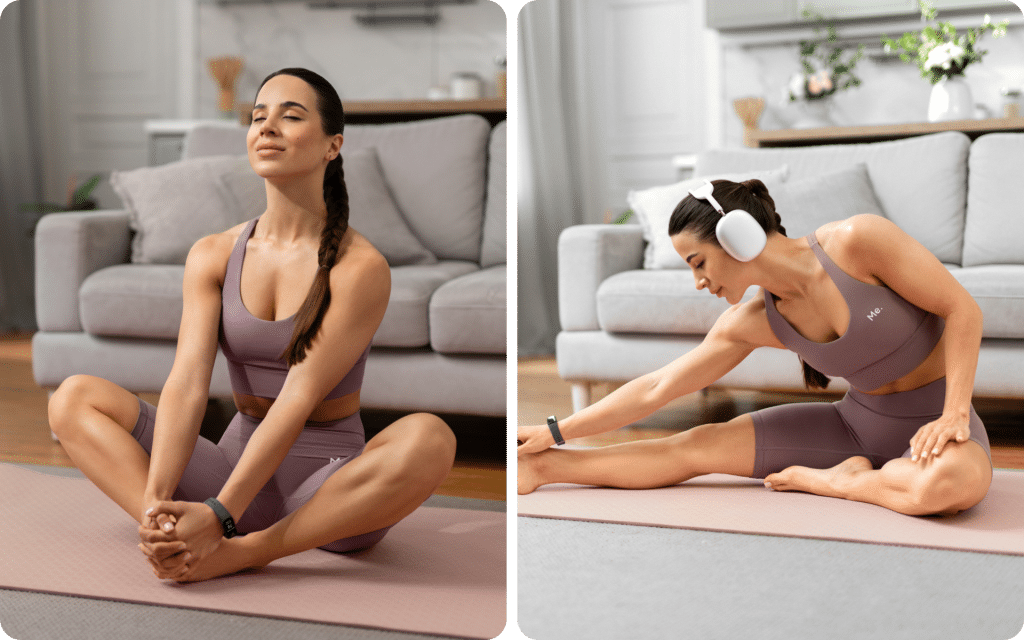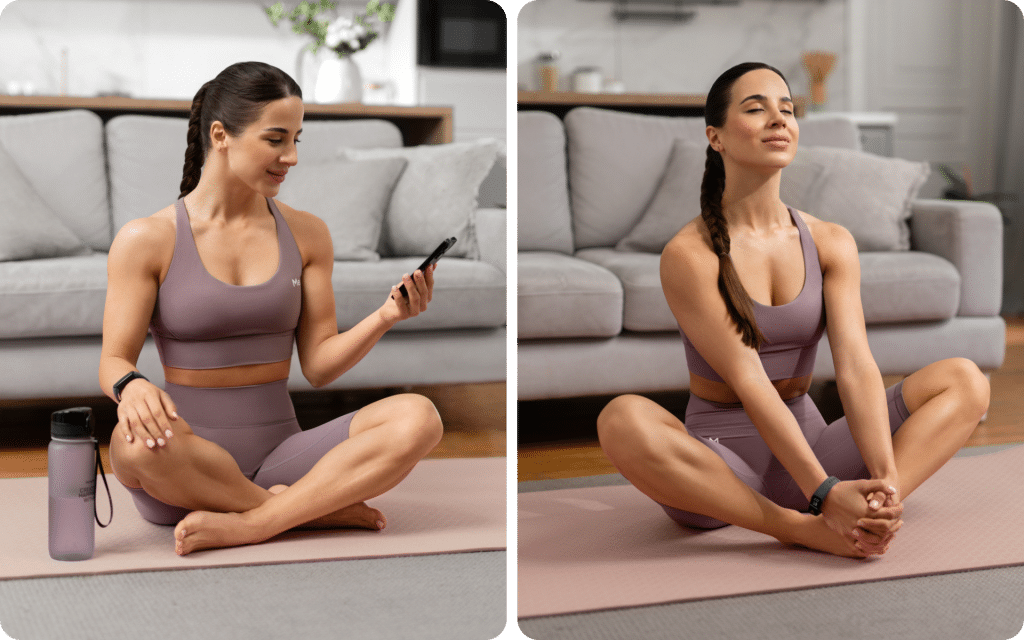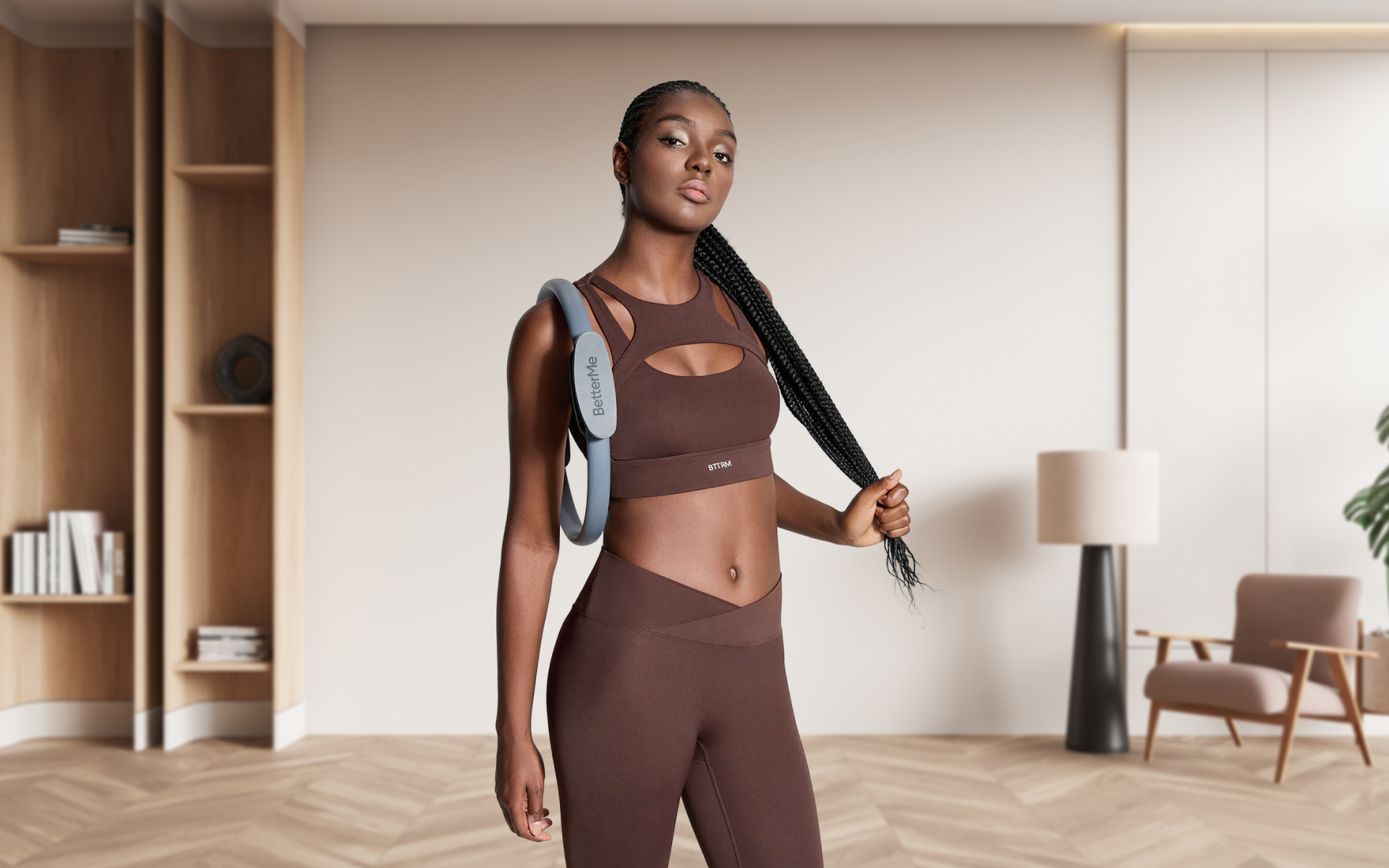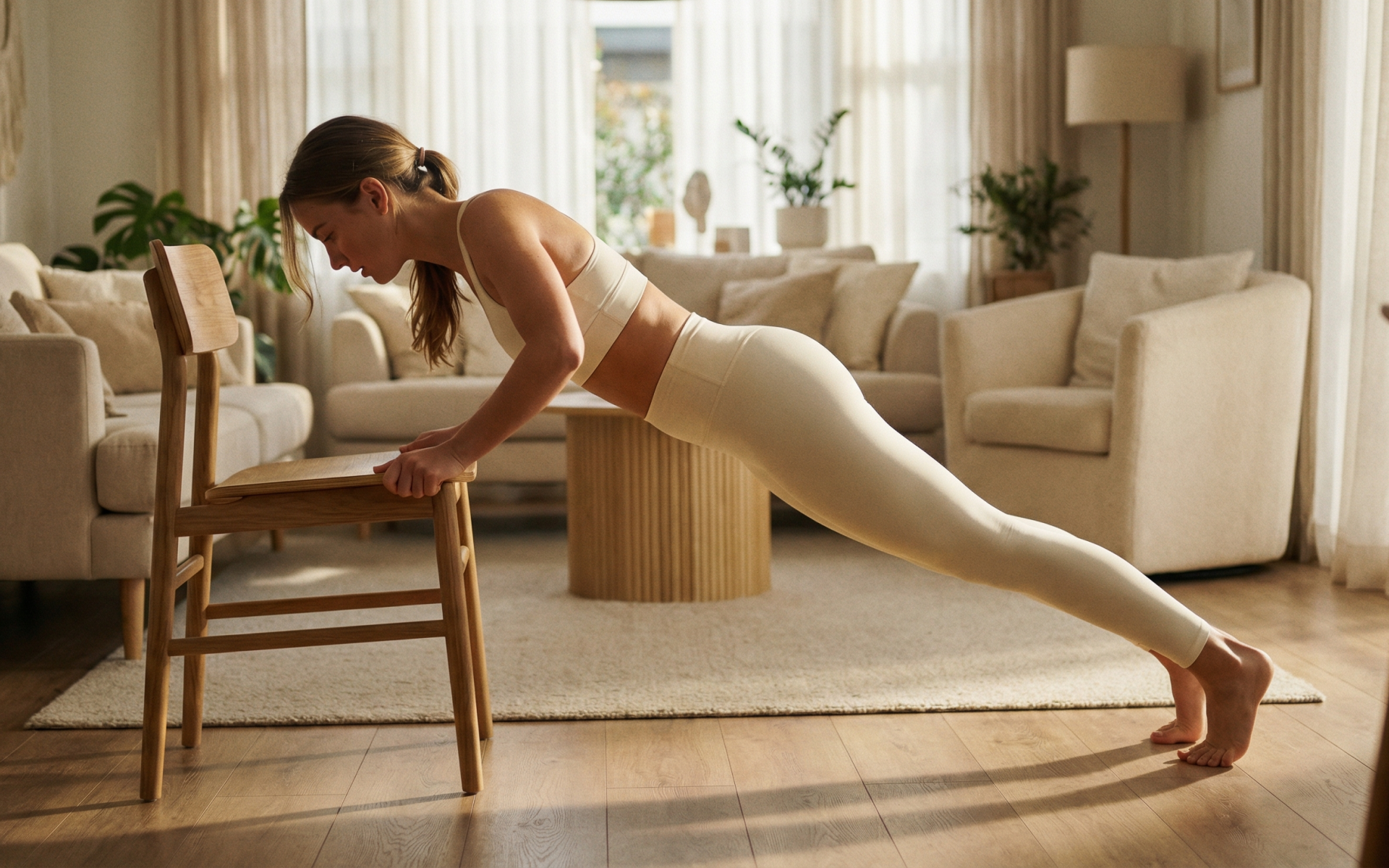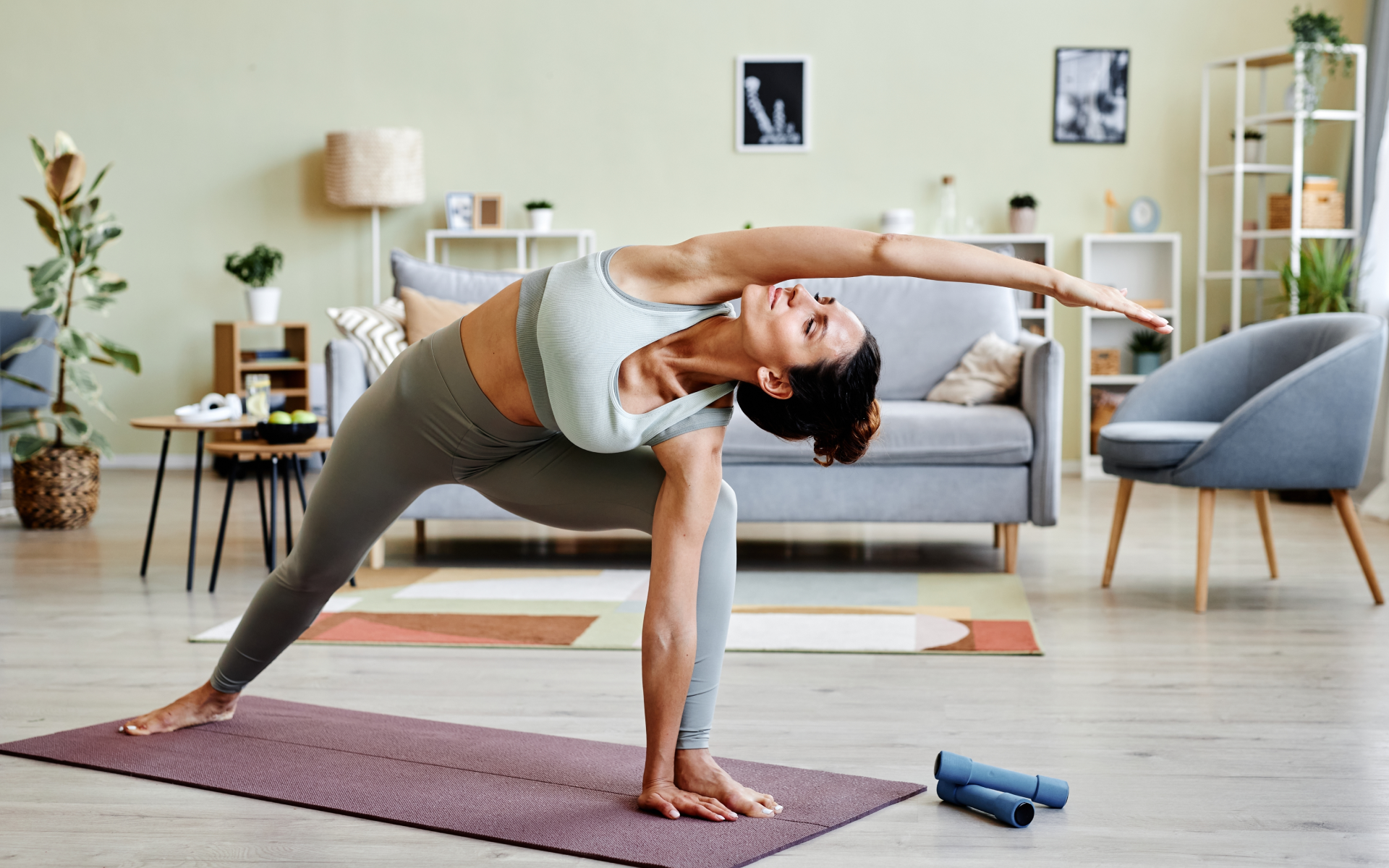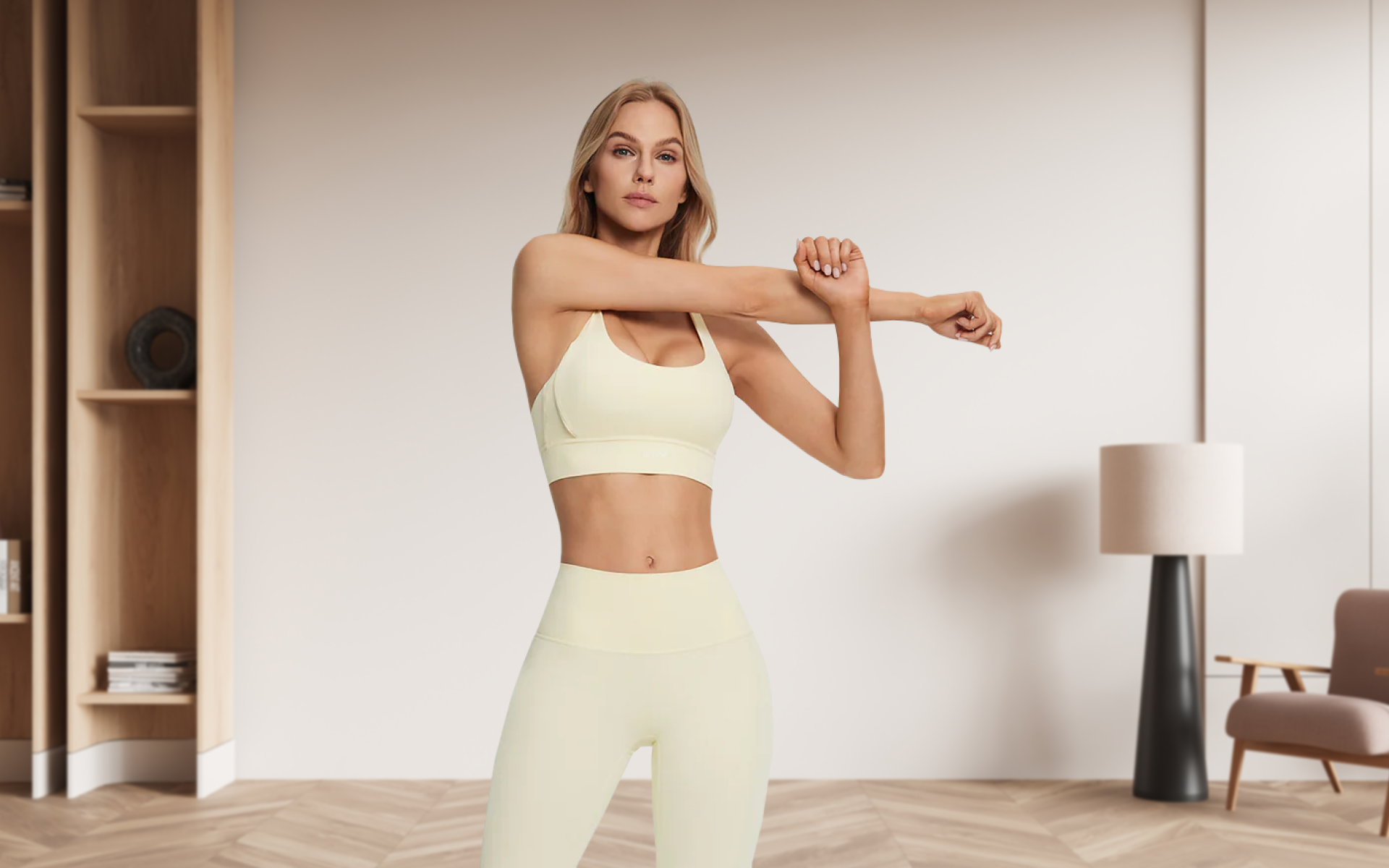Thanks to the power of social media, the hype of Pilates is back with a bang. While Pilates as a form of exercise has existed for many years, it has largely remained in the background, overshadowed by more popular training styles such as cardio and resistance training.
The Pilates body is one of the main things that attracts people to this workout and makes them curious to want to try Pilates exercises for themselves. However, a lack of information on how to do this exercise, the benefits of Pilates, and the accessibility of Pilates (do you have to go to a studio or can you do Pilates at home?) leave many people stumped on where to start.
If you’re one of the many people who are curious to try this exercise but are confused regarding how to go about it, then you’re in the right place. Read on for some quick Pilates 101 facts to get you ready for a workout session.
What Is Pilates 101?
This is a simple and straight-to-the-point guide for Pilates exercises for beginners. This article hopes to discuss some of the Pilates basics that everyone who is new to the workout needs to know in order to make a more informed decision on whether or not it suits their lifestyle and needs.
What Are the Basics of Pilates?
- Breath
- Centering
- Concentration
- Control
- Precision
- Fluidity
Also known as the fundamentals of Pilates, these are the principles that the exercise is based on. It’s said that through these six core principles of Pilates, you can use both the mind and the body to attain optimal balance, strength, and health. These principles are as follows (1, 2):
Breath
This is said to be the most important aspect of this exercise and it’s seen as the fuel of force that runs the powerhouse. Joseph Pilates stressed the importance of breathing correctly by stating that it matters more than actually learning the proper moves of the exercise. Regard breathing as an essential aspect of performing any exercise with correct form.
Centering
This refers to the core or your core muscles, which are the powerhouse mentioned above. This is where all the energy needed for the workouts is concentrated and when exercising, the energy moves from this point going all the way to the extremities.
Concentration
The mind-body connection is important in all kinds of exercises but is fundamental to Pilates. The mind helps guide the body and without proper concentration, you won’t execute the moves correctly. When doing these Pilates 101 exercises, it’s recommended that you focus on your breathing patterns and the muscles in the body part(s) you’re about to exercise.
Read More: What Do You Need for Pilates? The Equipment You Should Know About
Pilates 101: Control
While Pilates exercises can be quite repetitive, a great deal of control of both the body and mind is required in order to execute them perfectly.
When you have better control of these two factors, you’re typically less likely to make mistakes while exercising and you also have the potential for better alignment, coordination, and balance.
Better control also allows you to do the workouts with less effort and muscle tension, which can contribute to reducing the soreness you feel after a workout.
Precision
As with concentration and control, precision allows you to engage your body and muscles during your workout. With better precision, your execution of these exercises will become better. Better precision also allows you to isolate and concentrate on the muscles that are being worked out, increasing mind-body control, which can help you perform the exercises correctly and more effectively.
Fluidity
The debate of Pilates vs yoga is often one that is centered around differentiating between these two forms of exercise. Some beginners may have trouble deciding which of these two is most effective for them. While they both have their differences, Pilates and yoga also share quite a number of similarities – one of the main ones being how fluid and graceful the moves are.
As with yoga sequences, Pilates movements flow into each other, and with greater understanding of the exercise, the gracefulness or flow of the movements can improve. This movement precision and proficiency can also be used in everyday life.
Intense sweat sessions, working weight loss tips, lip-smacking recipes come in one package with the BetterMe: Health Coaching app—all at your fingertips, start transforming your life now!
Can You Teach Yourself Pilates?
Yes, you can teach yourself Pilates without the need to attend a Pilates class at a studio. Thanks to sources such as YouTube and Pilates apps, you can learn Pilates at home and execute perfect moves even without the need for equipment. However, you should be wary of the resources that you’re using to learn these moves. The best and safest programs are those that are created by certified instructors. There are many people who claim to be something they’re not online, so make sure to check who you’re learning from.
A great example of an app that was created and constantly updated by certified fitness professionals is the BetterMe App. This app offers Pilates challenges you can do in the comfort of your home and with minimal equipment. On the app, you can learn how to do both wall Pilates and mat Pilates and sculpt the body of your dreams. In addition, the app provides access to certified fitness professionals who can work with you one-on-one to help you achieve your wellness or fitness goals. They can act as motivators and help you answer any questions you may have about fitness or nutrition.
Pilates 101: Is Pilates Too Hard for Beginners?
No, it’s not. As with every new thing, doing Pilates can initially seem challenging. However, with consistency, patience, and above all choosing beginner-friendly moves, you’ll be able to master this workout in no time. Remember to progress at your own pace and that we’re all unique individuals. Just because one person can get through something quickly doesn’t mean you should give up. Exercise is all about consistency and finding what works for you as an individual.
How Often Should a Beginner Do Pilates?
The current recommendations for physical activity for an adult state that everyone should strive to do at least 150–300 minutes per week of moderate-intensity exercise, 75–150 minutes per week of vigorous-intensity aerobic physical activity, or an equivalent combination of moderate- and vigorous-intensity aerobic activity (3, 4).
This means that as an adult, you should aim to exercise for at least 30 minutes a day, 5 times a week. However, as a beginner, working out 5 days a week may seem a little daunting. Instead, you can start by doing your exercises 3 times a week and work your way up from there (3, 4).
You shouldn’t be tempted to do Pilates or any other kind of workout, cardio, weight lifting, or otherwise 7 days a week. Exercising every day won’t allow your body and muscles to rest and recover, which can lead to overtraining – a syndrome that negatively affects both your physical and mental health. This can lead to injuries over time and set you back even further. Remember, the best form of exercise is one you’re able to do consistently and with proper form.
Is Pilates Harder Than Yoga?
Not necessarily. Both Pilates and yoga are low-impact workouts that involve a great deal of stretching moves. However, unlike the latter, the former combines strength and resistance training. So rather than claiming that Pilates is harder, we can say that it’s more intense than yoga. If you’re trying to decide between Pilates vs Yoga, we would suggest doing both as they complement each other.
Read More: Wall Pilates Exercises: Step-by-Step Instructions & Tips
Is 20 Minutes of Pilates a Day Enough?
It can be. As research has found, the minimum recommended time for a daily workout is 30 minutes. However, recent studies have shown workouts that take up just 10 minutes of your day (or less) can be just as good. This research also looks at the duration of the entire week of exercise. So if you can only squeeze in 10 minutes one day, potentially try to double that the following day or sometime later in the week.
- In a study published in 2016, researchers looking at the effects of exercise in sedentary persons found that short bouts of exercise and longer bouts of exercise provided similar results in the participants. (5)
The short burst exercise involved 20 seconds of all-out cycling sprints plus 2 minutes of moderate speed cycling, while the longer workout involved 45 minutes of continuous cycling (5).
- In another study that was published in 2019, participants were asked to do sprint workouts. The first group did 3 × 20-second all-out cycling workouts, separated by a 1 to 4-hour rest period and the other group did 3 × 20-second workouts, interspersed with 3 minutes of rest in a 10-minute training session.
At the end of the study, all participants had improved their exercise performance and their oxygen uptake while working out was higher than before (6).
- In a meta-analysis also published in 2019, researchers found that doing one long bout of exercise had the same effect on affected fitness, blood pressure, lipids, insulin, and glucose as doing several shorter workouts throughout the day (7).
All this shows that while 30 minutes is the recommended standard, it doesn’t mean that it’s the only thing that can work. A simple 10- or even 20-minute Pilates workout a day can be just as good, and this is much better than no exercise at all.
BetterMe will shake off your mental funk, rid you of your energy-zapping habits, and help you sculpt the body of your dreams. Intrigued? Hurry up and change your life for the better!
How Quickly Will Pilates Change My Body?
Changes in your body could start to happen as soon as you start increasing your daily movement and monitoring the amount of food you are consuming. Being in a calorie deficit is arguably the most important aspect of weight loss. This means that you’re consuming fewer calories than you’re burning each day. If you’re able to follow this rule, then you’ll be on the right track for weight loss and long-term results. Remember that the CDC states that if all factors that affect weight loss are in line with each other, you can lose anywhere between 1 and 2 pounds a week (8).
From this, we can say that changes are almost immediate. However, these changes, especially physical changes, can take time to see. It takes approximately 4 to 6 weeks to start seeing significant weight loss changes, so be patient and consistent. Also remember that we’re all unique individuals. Some may see weight loss quicker than others.
If the lack of visible physical changes is starting to frustrate you, pay attention to the things that aren’t easy to see and are often overlooked. For example:
- Can you breathe better when working out or do you still feel as winded as you did when you started your Pilates 101 journey?
- Can you do more sets and reps than you initially could? Or can you now do Pilates for longer without getting tired?
- Are your clothes starting to feel loose, even if the mirror says that your size hasn’t changed?
- If you also do weightlifting workouts, do the weights you were using before feel lighter? Have you been able to move up in weights?
Remember that the proof of the changes that Pilates has done to your body isn’t always immediately visible. Take time to consider all these other factors and you’ll see that your routine has been working for you.
Pilates 101: What Are the Benefits of Pilates?
In addition to helping with weight loss efforts, research has shown that there are a lot of benefits of Pilates. It can help improve your balance, posture, flexibility, muscle strength and endurance, mental health, and pain management, as well as gait and physical functioning in older adults (9, 10, 11, 12).
Yes, it is. As demonstrated above, Pilates is a strength training exercise that has similar benefits to those seen through weightlifting workouts. However, despite these benefits, Pilates is typically not a cardio-specific exercise, so if you want to improve your cardiovascular health, your muscle strength, and your endurance, we suggest adding some cardio exercises such as walking, swimming, hiking, or jumping rope to your weekly routine. Pilates classes are said to be costly as they need to accommodate the cost of the specialized equipment – reformers are rather pricey, studio fees, instructor expertise, and the personalized attention given to each person during a class. If you can’t avoid these expenses, we suggest doing mat or wall Pilates at home. The 80/20 rule comes from the Pareto principle, which states that roughly 80% of any outcome is controlled by just 20% of activities/factors (13). Therefore, in Pilates, sports, or any other physical activity, we can say that 80% of your success will come from 20% of the effort applied. Yes, you can. As seen above, research has shown that this workout regimen can help with muscle strength, growth, and endurance. Studies have also shown that participating in this exercise routine can help improve your body composition through the improvement of body weight, waist circumference, lean mass, and BMI (14, 15).FAQs
Is Pilates enough of a workout?
Why is Pilates so expensive?
What is the 80/20 rule in Pilates?
Can you get fit with Pilates?
Pilates 101: The Bottom Line
We hope that through this Pilates 101 guide, you can see that this exercise isn’t as intimidating as you may have previously imagined. It can truly be for everyone, from beginners to people who have experience in fitness and are perhaps looking for something new to try and challenge themselves. However, it’s important to remember to contact your healthcare provider before you start any workout program. You may have pre-existing injuries or conditions that could prevent you from exercising.
In addition to the fact that Pilates is overall a low-impact workout with a potentially lower risk of injury, these exercises can help strengthen your core muscles, improve your flexibility, tone your muscles, and work to keep you in shape throughout your life. So step out of your comfort zone and give this form of exercise a try!
DISCLAIMER:
This article is intended for general informational purposes only and does not serve to address individual circumstances. It is not a substitute for professional advice or help and should not be relied on for making any kind of decision-making. Any action taken as a direct or indirect result of the information in this article is entirely at your own risk and is your sole responsibility.
BetterMe, its content staff, and its medical advisors accept no responsibility for inaccuracies, errors, misstatements, inconsistencies, or omissions and specifically disclaim any liability, loss or risk, personal, professional or otherwise, which may be incurred as a consequence, directly or indirectly, of the use and/or application of any content.
You should always seek the advice of your physician or other qualified health provider with any questions you may have regarding a medical condition or your specific situation. Never disregard professional medical advice or delay seeking it because of BetterMe content. If you suspect or think you may have a medical emergency, call your doctor.
SOURCES:
- Pilates (2011, ncbi.nlm.nih.gov)
- Understand the principles of Pilates (n.d., us.humankinetics.com)
- Adult Activity: An Overview (2023, cdc.gov)
- An Overview of Current Physical Activity Recommendations in Primary Care (2023, ncbi.nlm.nih.gov)
- Twelve Weeks of Sprint Interval Training Improves Indices of Cardiometabolic Health Similar to Traditional Endurance Training despite a Five-Fold Lower Exercise Volume and Time Commitment (2016, journals.plos.org)
- Sprint exercise snacks: a novel approach to increase aerobic fitness (2019, pubmed.ncbi.nlm.nih.gov)
- The Effects of Continuous Compared to Accumulated Exercise on Health: A Meta-Analytic Review (2019, pubmed.ncbi.nlm.nih.gov)
- Steps for Losing Weight (2023, cdc.gov)
- Pilates: how does it work and who needs it? (2011, ncbi.nlm.nih.gov)
- Effects of Pilates Training on Physiological and Psychological Health Parameters in Healthy Older Adults and in Older Adults With Clinical Conditions Over 55 Years: A Meta-Analytical Review (2021, frontiersin.org)
- Effects of Pilates on health and well-being of women: a systematic review (2023, bfpt.springeropen.com)
- PILATES EXERCISES, TYPES, AND ITS IMPORTANCE: AN OVERVIEW (2023, researchgate.net)
- Pareto Principle (n.d., sciencedirect.com)
- The effect of Pilates exercise on body composition in sedentary overweight and obese women (2017, pubmed.ncbi.nlm.nih.gov)
- Pilates for Overweight or Obesity: A Meta-Analysis (2021, ncbi.nlm.nih.gov)



